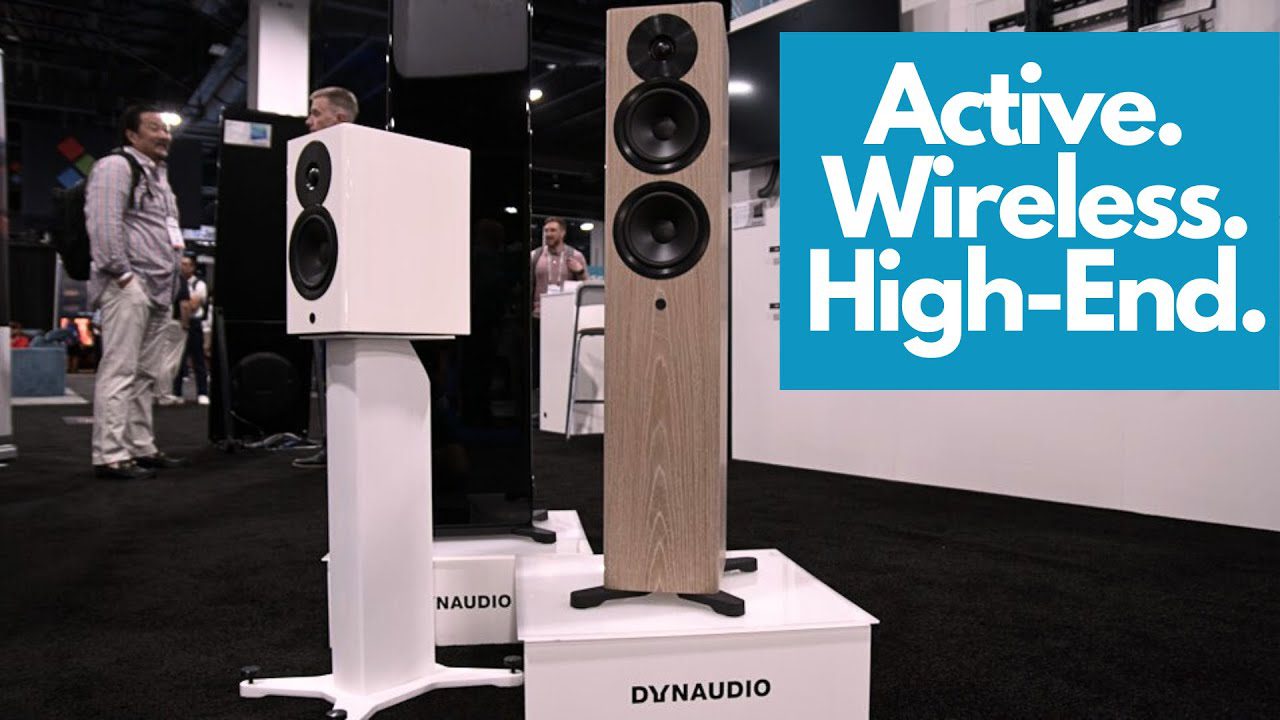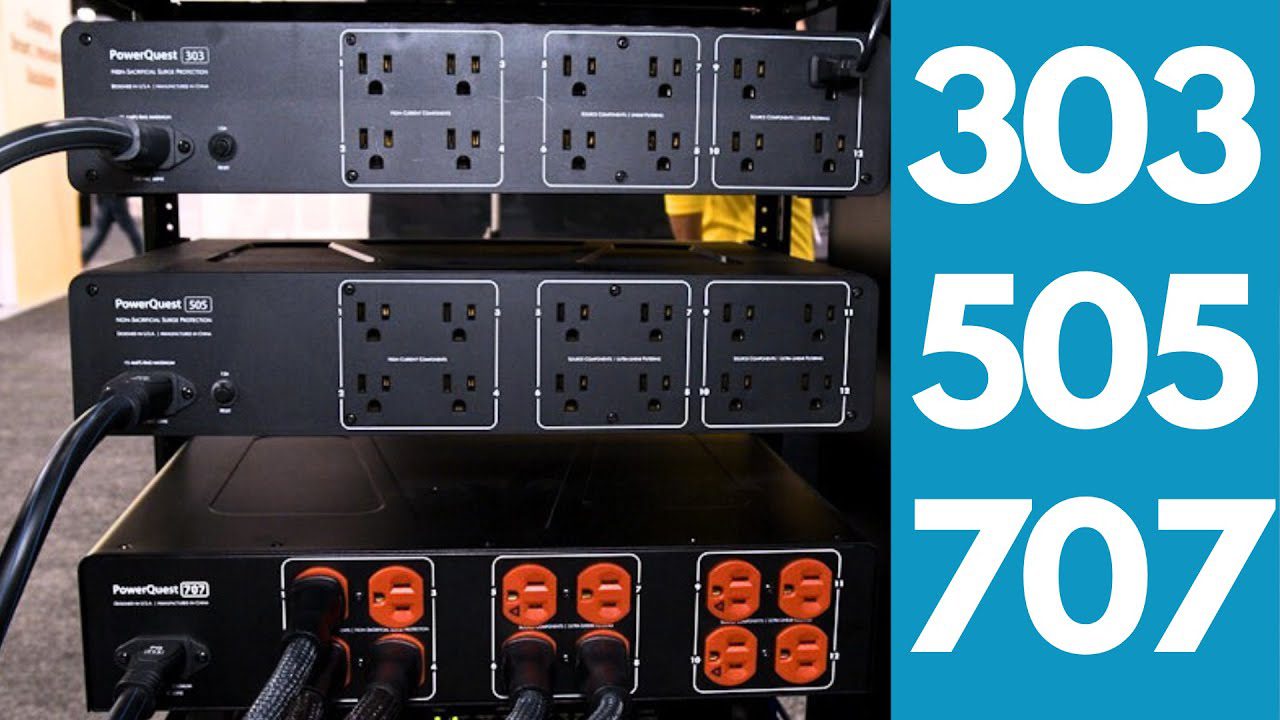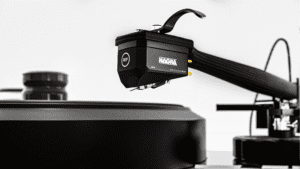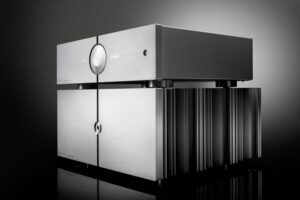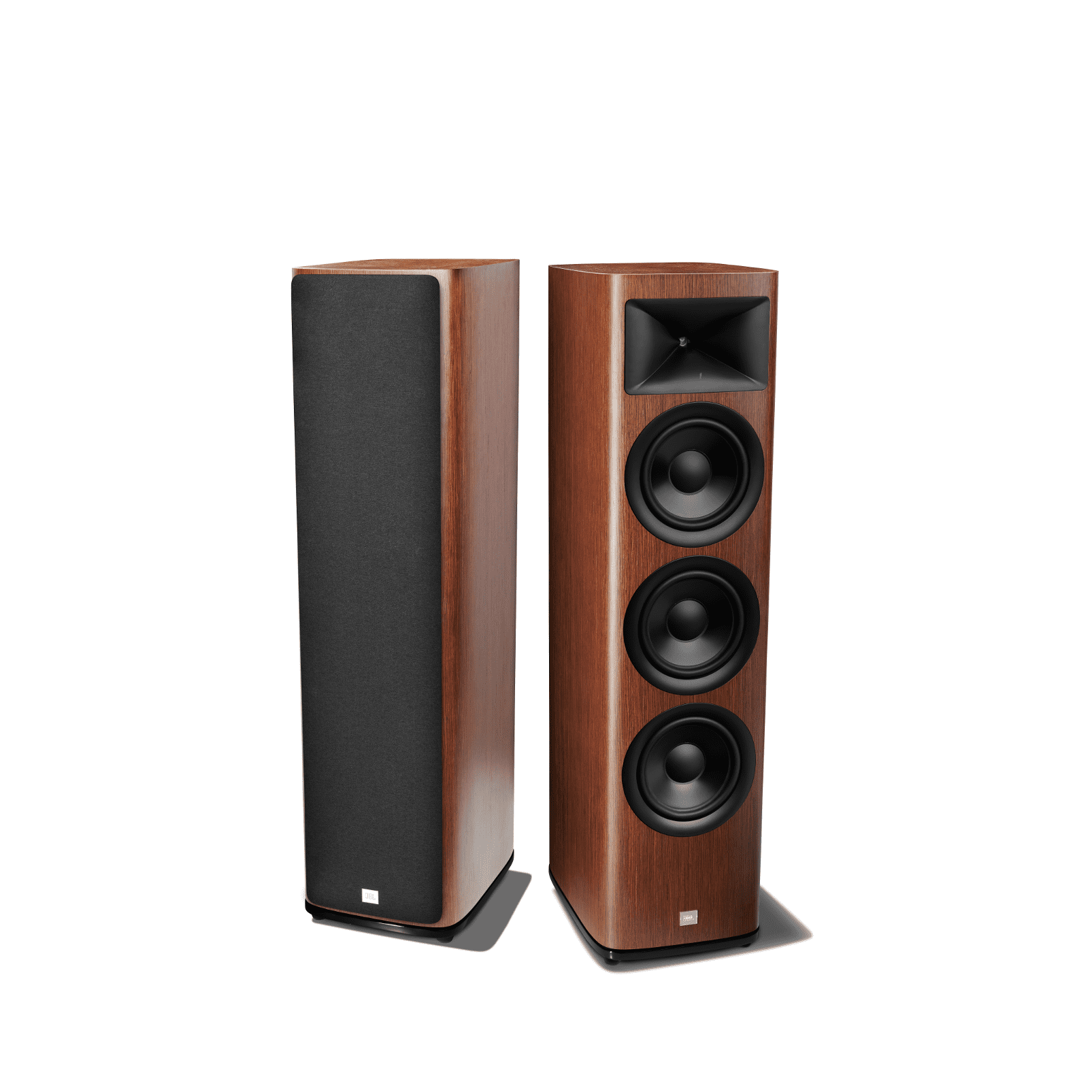
It’s not unusual to get a glimpse of the difference between the US and European markets for loudspeakers but if there’s anything in the pictures to give a sense of scale you will realise that these JBLs are more than a mere glimpse, they are the full Sherman tank. In the likely event that there are no clues to their scale I’ll mention that the HDI-3800s are 1.1m high and weigh 38 kilos. In the high end this is nothing unusual but at £4,000 these speakers are aimed at a broader market and presumably one that is as interested in watching movies as listening to music. To put it more bluntly, it’s a lot of speaker for the money and there aren’t many other respected brands that can compete when it comes to kilos per pound sterling.
They clearly come from a place where space is more affordable and high SPLs are very popular, but they also come from a brand with an impressive heritage that goes way back to the days when big was the only game in town where speakers were concerned. JBL has been releasing a lot of retro style speakers of late, often with lovely orange foam grilles, but the HDI-3800 is a more up to date beast that requires no stand and packs a lot of drive units into its substantial form.
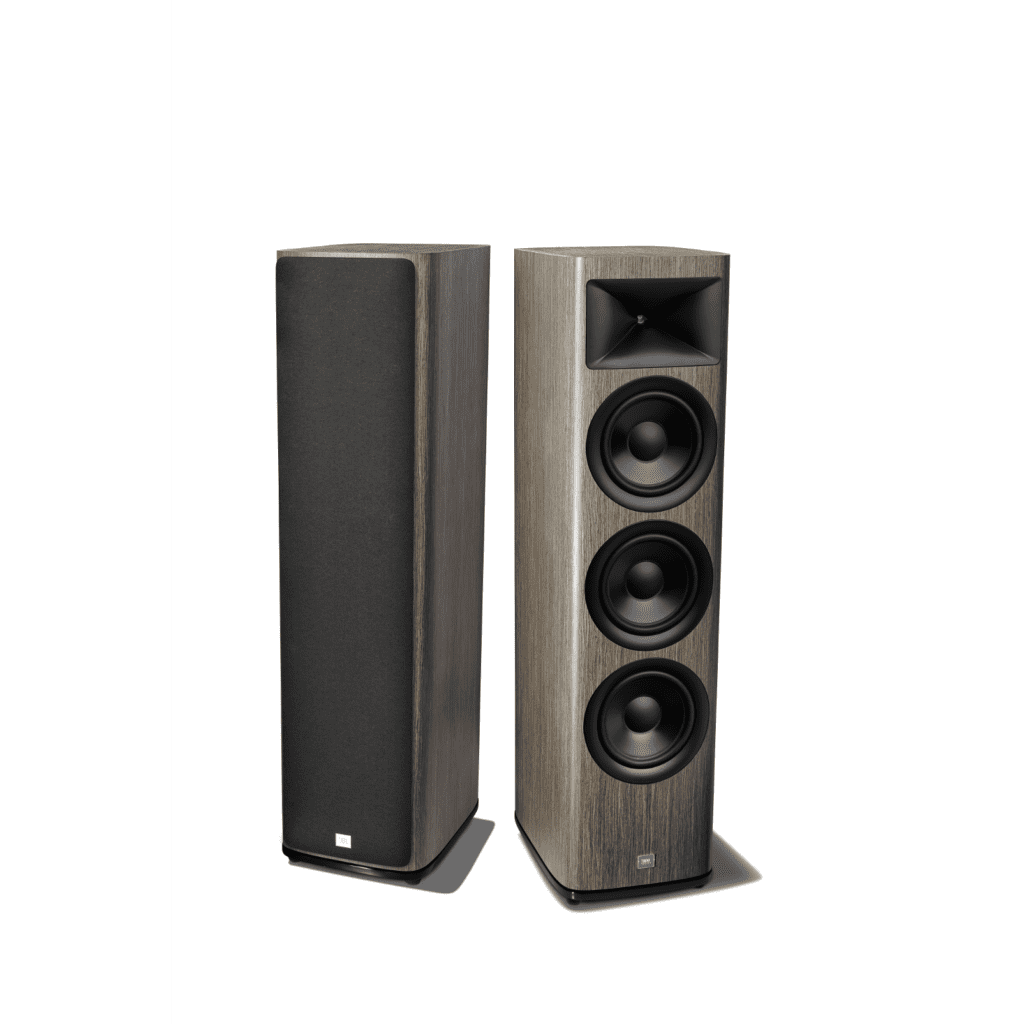
Let’s not underplay that ‘substantial’ nature of the loudspeaker. Although this isn’t as physically demanding a loudspeaker as the eight-foot tall, one-ton behemoths that dominate the top end of high-end audio (as well as the imposing girth of JBL’s own large horn designs), this is one heck of a lot of loudspeaker, and a heck of a lot of loudspeaker for the money, too. We shouldn’t be impressed simply by the size and weight of a loudspeaker design, but the HDI-3800’s physical characteristics directly contribute to an equally-impressive sub-40Hz in room response.
Despite the three big lower drivers, this is a two-and-a-half-way, reflex-loaded loudspeaker so the two lower drivers are bass units and the one above covers both mid and bass frequencies. They are eight-inch units with cast aluminium chassis and aluminium cones controlled by a substantial magnet assembly which incorporates a flux stabilisation ring, a vented pole piece and copper shorting ring. Features that are well regarded methods for reducing distortion and increasing linearity. The cabinet itself is very solid and loaded with two reflex ports on the rear, meaning they will need a reasonable amount of space behind them in most rooms if the bass is to remain controlled. The high frequency unit is a compression driver which is why there is a horn in front of it; this is a genuine horn system as opposed to the shallow horns or waveguides found on a number of speakers that have conventional dome tweeters providing treble.
Good compression
Compression drivers are a JBL speciality and come from the world of pro audio where high sound pressures are an absolute necessity, you can’t entertain a crowd of thousands with conventional tweeters unless you have an awful lot of them spread around the auditorium. Compression drivers are able to do this because the diaphragm is larger than the throat or compression cavity that sits between it and the horn, this arrangement increases resistance to radiation which rather counter intuitively also increases efficiency. The reason is that the driver is better matched to the volume of air it is driving than is the case with a dome fixed to a flat speaker baffle. This makes them significantly more sensitive but does bring the challenge of getting an even response from a horn. Compression drivers are generally aluminium but in the 2410H-2 used in the HDI-3800 JBL have used a thermoplastic polymer called Teonex, which has the correct rigidity and is better damped than metal alternatives. It is also an annular diaphragm, that is it is O shaped rather than being a full dome, with fixings at inner and outer edges and nothing conventional in the way of suspension, the polymer itself is flexible enough to be used thus.
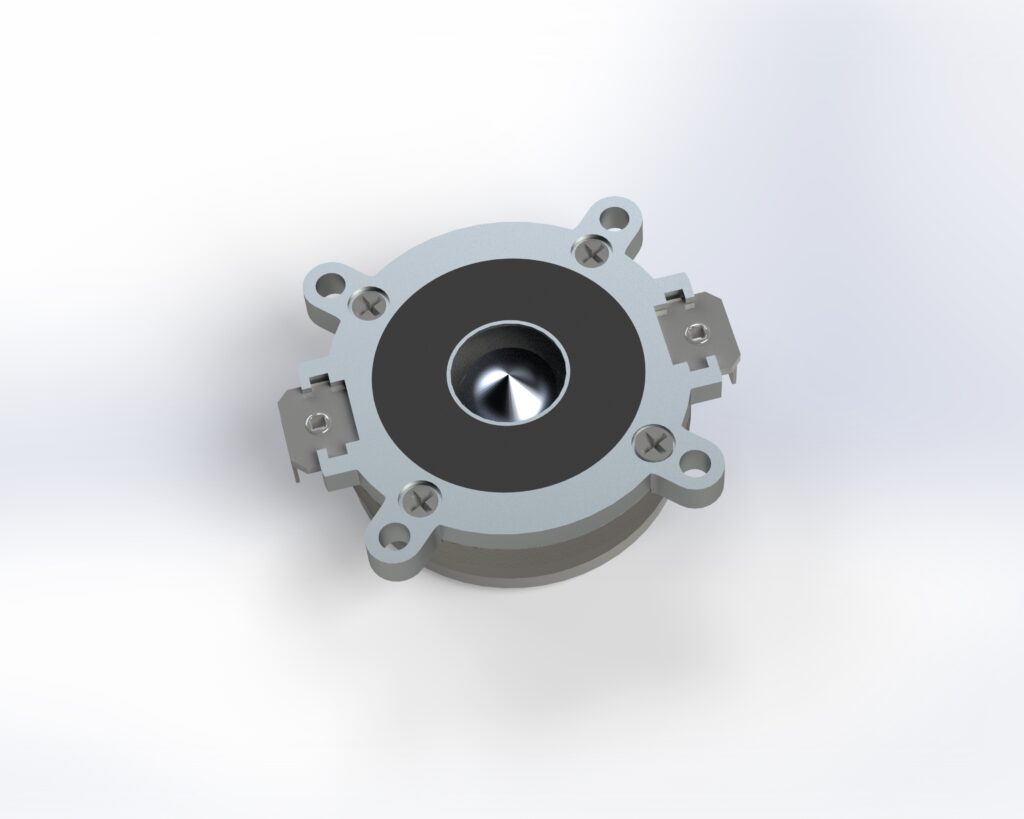
The overall sensitivity of this JBL is higher than average at 92dB but that’s for a four Ohm load so it will need a bit of muscle to achieve its potential, JBL recommend anything from 25 to 300 Watts and I used a Moor Amps Angel 6 which sits near the middle of this range with 150 Watts on tap. Perhaps inspired by their cinematic inclinations the first track that dropped on the streamer was the title theme from Blade Runner which includes speech that came through with considerable clarity before Vangelis’ gorgeous wall of synth took centre stage. The low end on this was lovely, it had an ease and extension that you only get with higher sensitivity designs. You get a strong sense of mass, a substantial presence that can only really be achieved with big or multiple drivers in big boxes.
The sound is more cuddly than you might imagine given the fire power on offer, the treble and mid are appealingly smooth and reflect the balance of whatever you play without any sense of effort. The bass could be faster, the voicing is distinctly cinematic in this regard with the emphasis on scale and depth rather than immediacy, but I tried something which helped notably in this regard. I reviewed a set of Franc equipment support feet around the same time and tried the Slim model under the rubber feet of the JBLs (spikes are supplied for the masochists). These raise the speakers by 25mm and increase the sense of pace and openness rather nicely, they don’t appear to reduce bass power one bit and allow track’s like Rymden’s ‘The Lugubrious Youth of Lucky Luke Live’ to become quietly captivating. The piano in particular was superb but the harsher sounds became more obvious and on balance I preferred the balance with the JBLs on the floor. I suspect that this is a height thing related to the horn as much as the isolating abilities of the feet.
Temporary measures
I really enjoyed a Bonnie Raitt album, Taking My Time, on vinyl, here the HDI-3800 showed the age of the recording alongside the high calibre of the performance. They also revealed the benefits of not leaving the phono stage on a network switch (a temporary measure I assure you) by delivering better imaging with it back on the rack. This is a revealing speaker of that I have no doubt. I tried the JBLs on a much lower powered Enleum AMP-23R integrated amp (issue 202) that had bowled me over with its charm through my regular speakers. Here it continued to shine with, surprisingly, some of the best sounding dub I have enjoyed at home courtesy of Burnt Friedman. I think it was partly a success because the Enleum doesn’t really plumb the low frequency depths but emphasises the tune emphasising harmonics rather than very low bass. This album is often overpowering in this respect, and by making the low end a little leaner it was able to deliver a more enjoyable result.
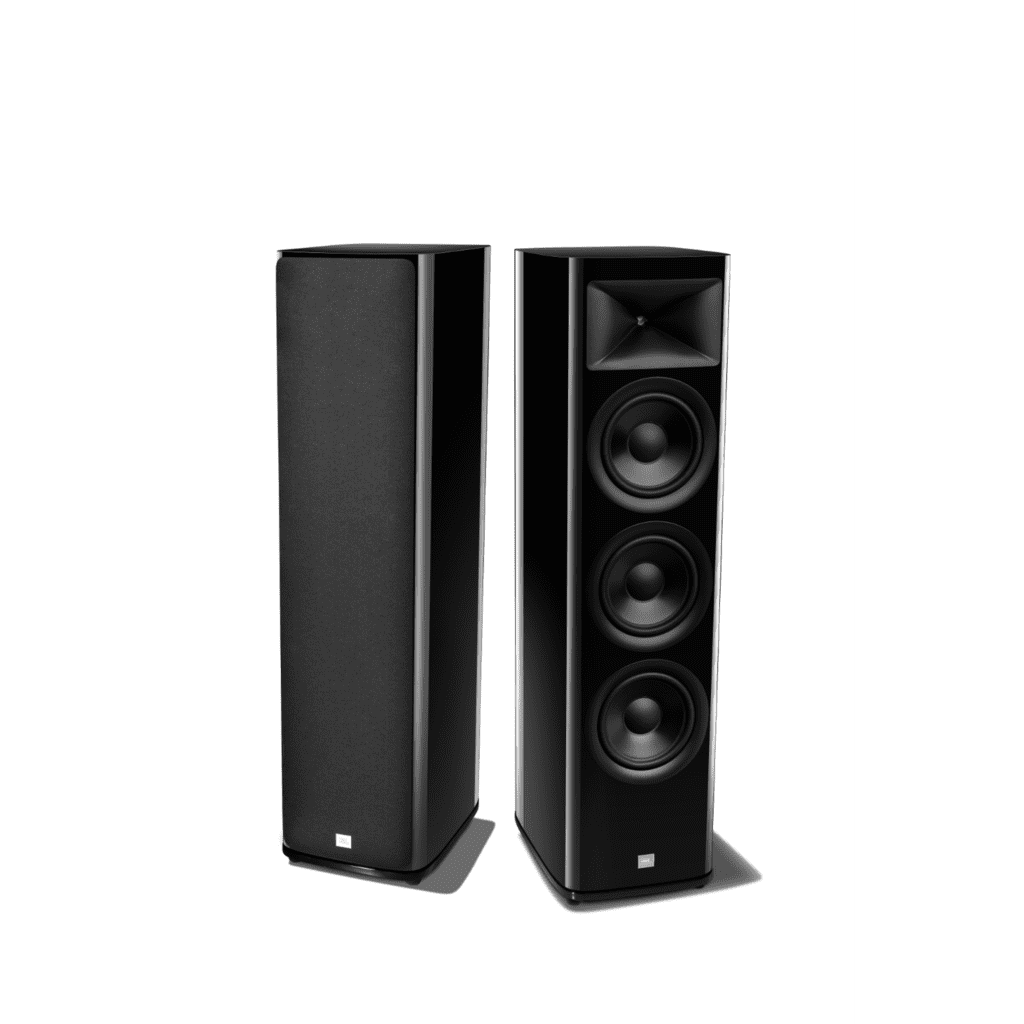
However, the more music I played through the JBLs the better it seemed to get, the focus on ‘music’ rather ‘sound’ was notable and I enjoyed a variety of albums both old and new. I gave Joni Mitchell and James Taylor’s live performance from 1970 a spin on Qobuz and while it’s not the greatest sounding recording it was easy to enjoy the natural simplicity of Mitchell’s high voice and the way it contrasted with the dark texture of Taylor’s. Playing this with the Angel 6 amplifier I enjoyed an easier and more sumptuous sound and one that continued to impress when it came to voices; on Nick Cave’s ‘Jesus Alone’ for instance the bass is very low and weighty but the voice is in a distinct spotlight. The speaker controlling the bass and allowing the mid and treble to shine through with no sense of overlap or blur. It builds a powerful, torquey sound that’s bursting with electricity and feels as though it could lash out at any moment. Ambience is well served by this depth as well, the speaker picking up on the echoes and reverb that build up the picture of a live recording. Tracks with reverb and delay applied ‘in the box’ are just as effective, Kendrick Lamarr’s ‘How Much a Dollar Cost’ being a good example of track that’s been carefully constructed to sound edgy but which is also remarkably clear and solid in its three dimensionality. It sounds as if it could have been mastered on a speaker like this.
Conclusion
I suspect that these JBLs had not been given much of a run-in prior to delivery because the results they produced improved markedly over the weeks that they were in the system. I played a lot of music through a variety of sources and amplifiers and came to the conclusion that they are really rather good, their high sensitivity is a definite bonus but ultimately the HDI-3800s are a lot more sophisticated than they look. This combined with their competitive pricing makes them look like rather good value if you have the space.
Technical specifications
- Type 2.5-way, four-driver, reflex loaded floorstanding speaker with horn loaded tweeter.
- Driver complement One 25mm Teonex compression driver; three 200mm black Advanced Aluminium Matrix cone, cast frame woofers
- Crossover frequencies 800Hz, 1800Hz
- Frequency response 37Hz–30kHz
- Impedance 4 Ohms
- Sensitivity 92dB (2.83V @ 1m)
- Dimensions (H×W×D) 1100.5 × 300 × 417.8mm
- Weight 38kg/each
- Finishes High gloss black, satin walnut, grey oak
- Price £3,999/pair
Manufacturer
JBL
Tel: +44(0)1223 203200
By Jason Kennedy
More articles from this authorRead Next From Review
See all
Reiki Audio SuperSwitch Master Pro + Servant Pro
- Mar 27, 2024

Melco Audio N1-S38 music server
- Mar 27, 2024

Focal Utopia 2022 headphones
- Mar 27, 2024



